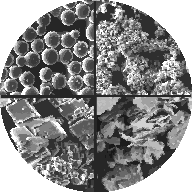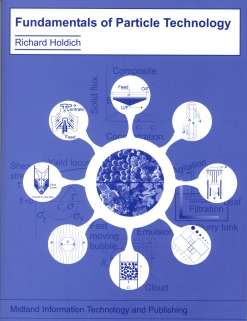Fluidisation - Chapter 7
Liquid fluidisation illustration
The video below illustrates the process of fluidisation with a liquid, giving particulate fluidisation:
For an illustration of gas fluidisation, giving aggregative (or bubbling) fluidisation please take the link here
for the AIChE Academy video on fluidisation.
Answers to problems at the end of Chapter 7:
Q1 - see equation (7.4) and note use of Sauter mean diameter
Q2
i) the correct answer is (b)
ii) the correct answer is (a)
iii) the correct answer is (a)
iv) the correct answer is (d)
v) The use of the Kozeny-Carman equation was justified, as the
Modified Reynolds number is less than 2 - see the box on page 75.
vi) The fluidisation type is particulate.
Q3
i) the correct answer is (d)
ii) the correct answer is (b)
iii) the correct answer is (a)
iv) the correct answer is (d)
v) the correct answer is (c)
Q4
The by-pass is one third: 0.05 divided by 0.15. This is a gross estimation of the by-pass
based on the assumption that all gas in excess of that required to fluidise the bed goes
through the bed as bubbles and that the bubbles do not contact the bed solids. If you look
at Figure 7.12 you will see that the gas does contact the bed particles within the cloud;
hence, this will give an overestimation of real bed by-pass of fluidising gas.
Bed expansion is 11%, determined by conducting a volume balance
and using the knowledge that the residence time of a bubble within the bed is
expanded bed height divided by bubble velocity.
Further information can be found in the Frequently Asked Questions:
FAQ

